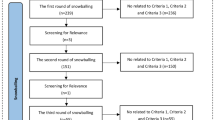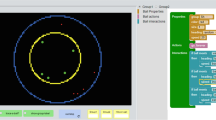Abstract
Traditional mathematics assessments often fail to identify students who can powerfully and effectively apply mathematics to real-world problems, and many students who excel on traditional assessments often struggle to implement their mathematical knowledge in real-world settings (Lesh & Sriraman, 2005a). This study employs multi-tier design-based research methodologies to explore this phenomenon from a models and modeling perspective. At the researcher level, a Model Eliciting Activity MEA) was developed as a means to measure student performance on a complex real-world task. Student performance data on this activity and on traditional pre- and post-tests were collected from approximately 200 students enrolled in a second semester calculus course in the Science and Engineering department of the University of Southern Denmark during the winter of 2005. The researchers then used the student solutions to the MEA to develop tools for capturing and assessing the strengths and weaknesses of the mathematical models present in these solutions. Performance on the MEA, pre- and post-test were then analyzed both quantitatively and qualitatively to identify trends in the subgroups corresponding to those described by lesh and Sriraman.
Similar content being viewed by others
References
Burkhardt, H. (2006). Modelling in Mathematics Classrooms: reflections on past developments and the future.Zentralblatt für Didaktik der Mathematik, 38 (2), 178–195.
Carraher, D. W., & Schliemann, A. D. (2002). Is everyday mathematics truly relevant to mathematics education? In M. E. Brenner & J. N. Moschkovich (Eds.),Everyday and academic mathematics in the classroom (pp. 131–153). Reston, VA: National Council of Teachers of Mathematics.
Clarke, D. & Lesh, R. (2000). Formulating Operational definitions of Desired Outcomes of Instruction in Mathematics and Science Education. In Kelly, A. E. & Lesh, R. (Eds.).Handbook of Research Design in Mathematics and Science Education (pp. 113-?). New Jersey: Lawrence Erlbaum & Associates
Gainsburg, J. (2006). The Mathematical modelling of Structural Engineers.Mathematical Thinking & Learning, 8 (1), 3–36.
Gravemeijer, K., & Doorman, M. (1999). Context problems in realistic mathematics education: A calculus course as an example.Educational Studies in Mathematics, 39, 111–129.
Leder, G. C., Brew, C., & Rowley, G. (1999). Gender differences in mathematics achievement—Here today and gone tomorrow? In G. Kaiser, E. Luna & I. Huntley (Eds.).International Comparisons in Mathematics Education (pp. 213–224). London: Falmer Press.
Lesh, R. & Kelly, A.E. (2000). Multi-tiered teaching experiments. In A.E. Kelly & Lesh R. (Eds.),Handbook of research design in Mathematics and Science Education (pp. 197–230). Mahwah, NJ: Lawrence Erlbaum Associates
Lesh, R. & Doerr, H. M. (Eds.) (2003).Beyond Constructivism: Models and modeling perspectives on mathematics problem solving, learning, and teaching. Mahwah, NJ: Lawrence Erlbaum Associates.
Lesh, R. & Sriraman, B. (2005a). John Dewey Revisited—Pragmatism and the models-modelling perspective on mathematical learning. In A. Beckmann, C. Michelsen, & B. Sriraman (Eds.),Proceedings of the 1st International Symposium of Mathematics and its Connections to the Arts and Sciences May 18–21, 2005, University of Schwaebisch Gmuend: Germany. Hildesheim, Berlin: Verlag Franzbecker, pp. 7–31.
Lesh, R. & Sriraman, B. (2005b). Mathematics Education as a design science,Zentralblatt für Didaktik der Mathematik, 37 (6), 490–505.
Lesh, R. & English, L. D. (2005). Trends in the evolution of models & modeling perspectives on mathematical learning and problem solving.Zentralblatt für Didaktik der Mathematik, 37 (6), 487–489.
Maas, K. (2006). What are modelling competencies?Zentralblatt für Didaktik der Mathematik, 38(2), 113–142.
Niss, M (1999). Aspects of the nature and state of research in Mathematics Education.Educational Studies in Mathematics, 40, 1–24.
Watson, A. (2000). Mathematics teachers acting as informal assessors: Practices, problems and recommendations.Educational Studies in Mathematics, 41, 69–91.
Watt, H. M. G. (2005). Attitudes to the Use of Alternative Assessment Methods in Mathematics: A study with Secondary Mathematics Teachers in Sydney, Australia.Educational Studies in Mathematics, 58, 21–44.
Wittmann, E. (1998). Mathematics Education as a Design Science. In A. Sierpinska & J. Kilpatrick (Eds.),Mathematics Education as a Research Domain: A Search for Identity. (pp. 87–103). Dordrecht: Kluwer Academic Publishers
Author information
Authors and Affiliations
Rights and permissions
About this article
Cite this article
Iversen, S.M., Larson, C.J. Simple thinking using complex math vs. complex thinking using simple math—A study using model eliciting activities to compare students' abilities in standardized tests to their modelling abilities. Zentralblatt für Didaktik der Mathematik 38, 281–292 (2006). https://doi.org/10.1007/BF02652811
Issue Date:
DOI: https://doi.org/10.1007/BF02652811




